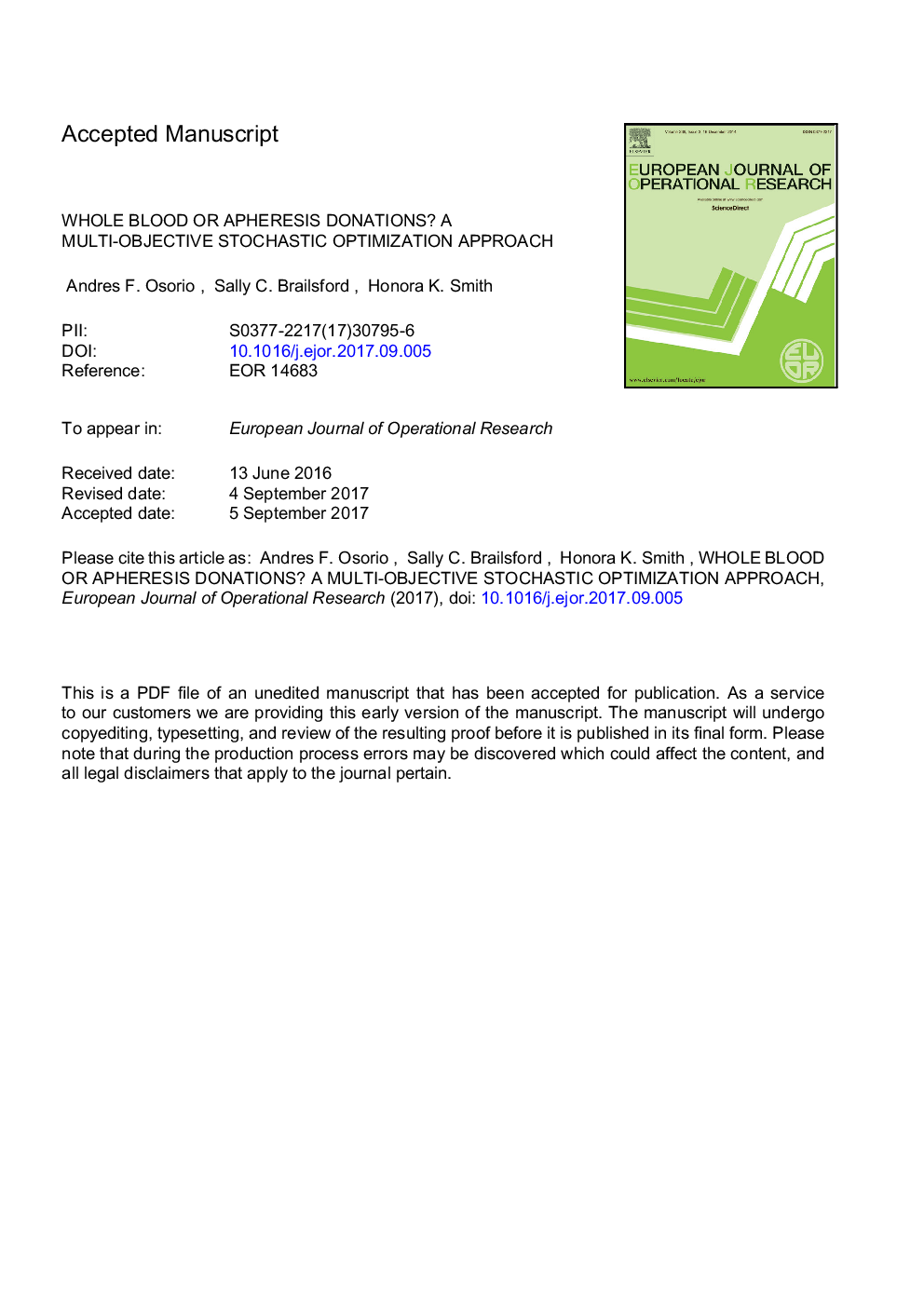| Article ID | Journal | Published Year | Pages | File Type |
|---|---|---|---|---|
| 6895221 | European Journal of Operational Research | 2018 | 38 Pages |
Abstract
In the blood supply chain, several alternative technologies are available for collection and processing. These technologies differ in cost and efficiency: for example, collection by apheresis requires very expensive machines but the yield of blood products is considerably greater than whole blood collection. Blood centre managers are faced with the difficult strategic problem of choosing the best combination of technologies, as well as the equally difficult operational problem of assigning donors to collection methods. These decisions are complex since so many factors have to be taken into account, including stochastic demand, blood group compatibilities, donor availability, the proportions of blood types in both donor and recipient populations, fixed and variable costs, and process efficiencies. The use of deterministic demand forecasts is rarely adequate and a robust decision must consider uncertainty and variability in demand as well as trade-offs between several potentially conflicting objectives. This paper presents a multi-objective stochastic integer linear programming model to support such decisions. The model treats demand as stochastic and seeks to optimize two objectives: the total cost and the number of donors required. To solve this problem, we apply a novel combination of Sample Average Approximation and the Augmented Epsilon-Constraint algorithm. This approach is illustrated using real data from Bogota, Colombia.
Keywords
Related Topics
Physical Sciences and Engineering
Computer Science
Computer Science (General)
Authors
Andres F. Osorio, Sally C. Brailsford, Honora K. Smith,
